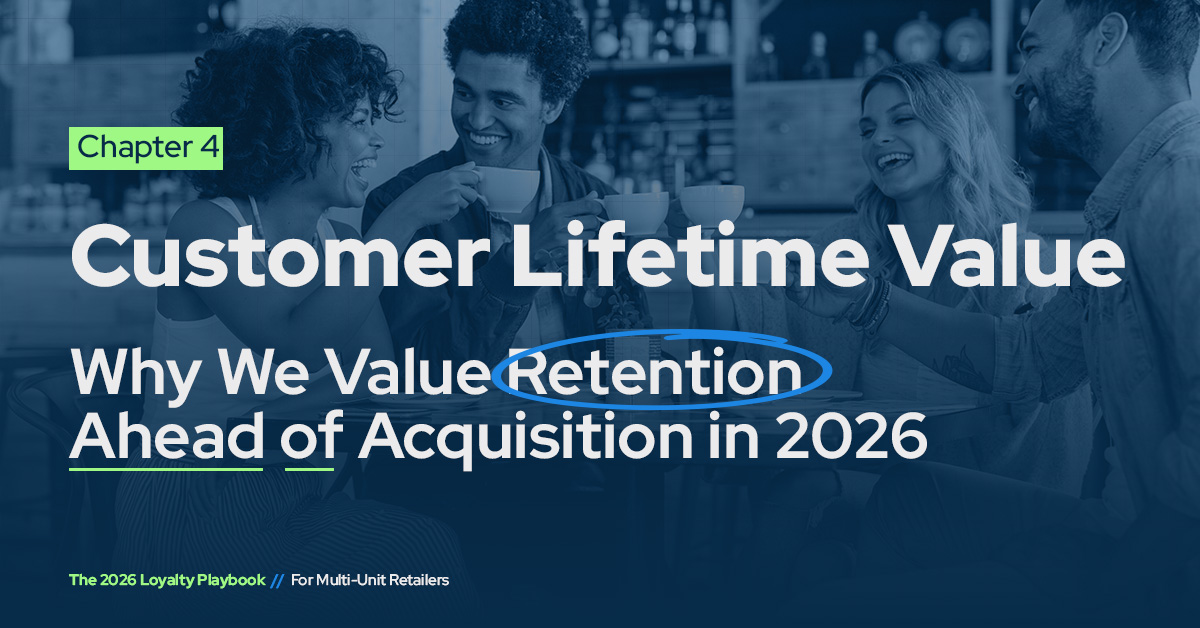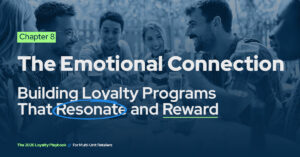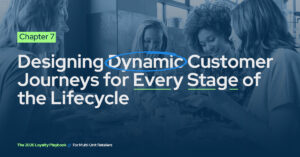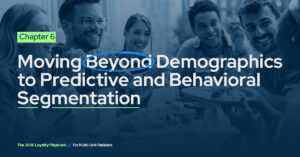The rising cost of customer acquisition is one of the most pressing challenges facing multi-unit retailers today. Paid media prices are increasing, competition is fierce, and consumer attention is fragmented across dozens of digital touchpoints. The result: it’s harder and more expensive to acquire new customers than ever before.
Yet, while acquisition gets the attention, retention delivers the return.
The Economics of Retention
The Customer Lifetime Value (CLTV) focus reframes growth from a sprint to a cycle, or one that compounds over time through loyalty, advocacy, and engagement. It’s a simple truth with profound implications: every dollar spent retaining a customer is worth more than two to five dollars spent acquiring a new one.
Repeat customers don’t just come back, they become advocates. They engage across more channels, try new products, refer friends, and become the emotional anchors of a brand community. The math is simple. Acquisition campaigns might bring in first-time guests, but without loyalty, many never return. By contrast, retention programs increase frequency, grow average order value, and extend customer lifespan. According to McKinsey, improving customer retention by just 5% can increase profits by 25–95%. (McKinsey).
Acquisition campaigns may fill the funnel, but loyalty programs hit the bottom line.
From Acquisition to Acceleration
In earlier chapters, we outlined how loyalty has evolved from a transactional tool (Chapter 1) to a behavioral ecosystem (Chapter 2), powered by data and CRM integration (Chapter 3). Together, these transformations create the foundation for CLTV growth.
Now, with the right data infrastructure and behavioral insights in place, brands can finally move from acquisition-focused marketing to relationship-focused growth:
- Identify high-value segments: CRM and loyalty data reveal who your most profitable customers are and what keeps them coming back.
- Predict and prevent churn: Behavioral signals help spot declining engagement before it becomes lost revenue.
- Automate retention journeys: Platforms like Salesforce Marketing Cloud enable real-time reactivation based on lifecycle stage or purchase gap.
- Amplify advocacy: Reward referrals, reviews, and social engagement to turn retention into organic acquisition.
The Retention Advantage
Retention isn’t just about keeping customers — it’s about building predictability and profitability. A strong CLTV model reduces dependence on volatile ad costs, stabilizes revenue forecasting, and maximizes every marketing dollar through smarter targeting.
At Response Labs, we’ve seen this shift firsthand. When loyalty and CRM are aligned, brands can focus on their most valuable customers, track behaviors that predict churn, and design interventions that keep members active. A data-driven retention strategy optimizes marketing spend, builds predictability into revenue, and reduces dependency on costly acquisition channels.
“Customer acquisition is important, but retention is where the growth happens. In 2026, every dollar invested in retention doesn’t just save costs — it multiplies future value,” says Kate Fulks, Director of Client Service at Response Labs.
The New Growth Math
In 2026, the most successful brands will measure success not by how many new customers they acquire — but by how effectively they retain, engage, and activate the ones they already have.
By connecting behavioral data, CRM intelligence, and loyalty activation, brands unlock a cycle of continuous growth — where every engagement builds equity, every message builds trust, and every customer becomes a long-term advocate.
Retention works like a flywheel. Each customer you keep increases in value over time, and loyal advocates naturally attract new guests. This fuels acquisition with higher-quality, lower-cost customers. It is the perfect loop where your dollars and your data start working together.
Discover more in The Loyalty Playbook for insights on how your CRM becomes a growth engine in Chapter 3. Or keep exploring with Chapter 5: Engineering the Foundation: Why Unified Data Is the Heart of Modern Loyalty
If you’re ready to transform your loyalty program into a true growth program, we’re here to help. Contact us today to talk about how to get started.




